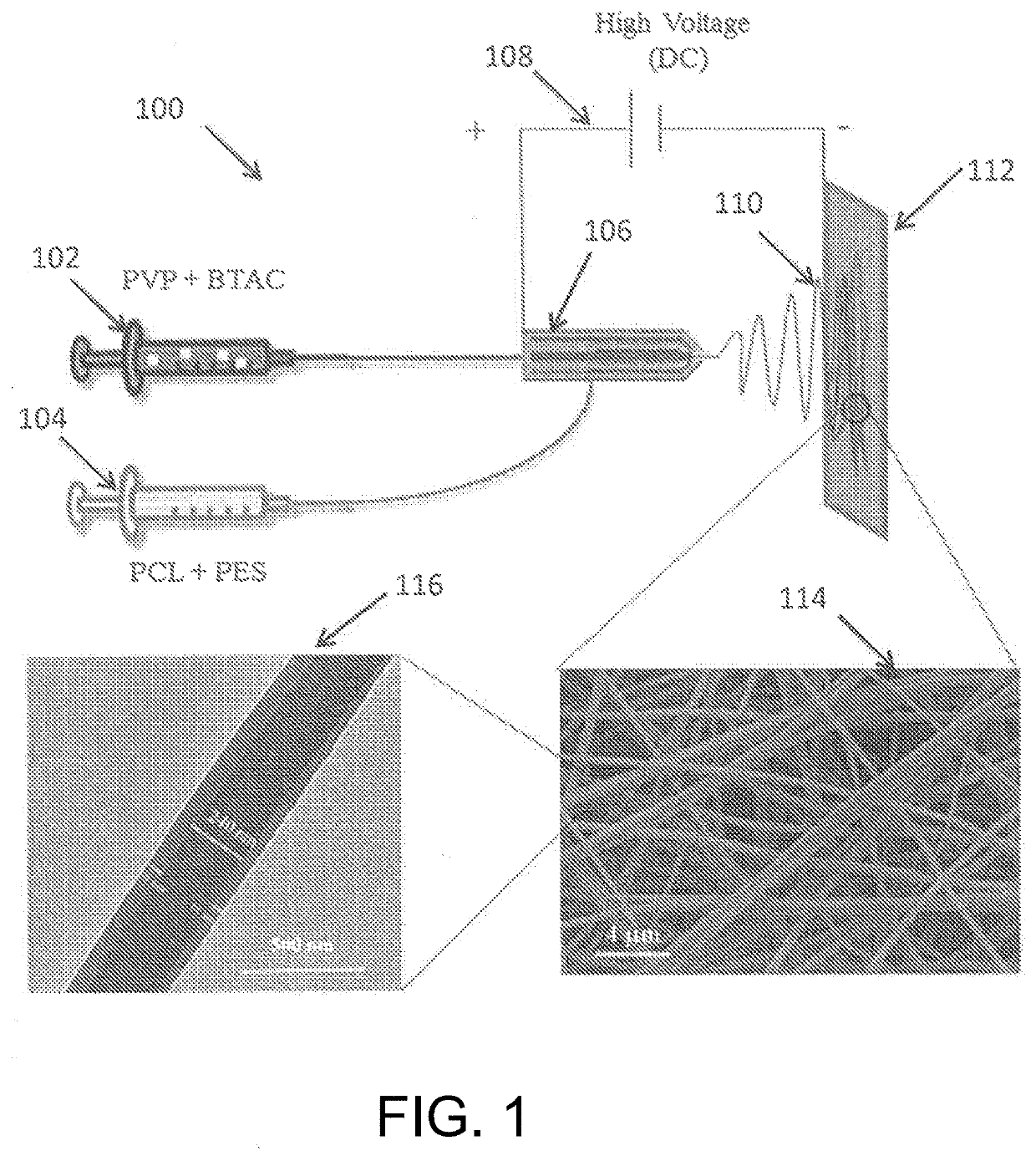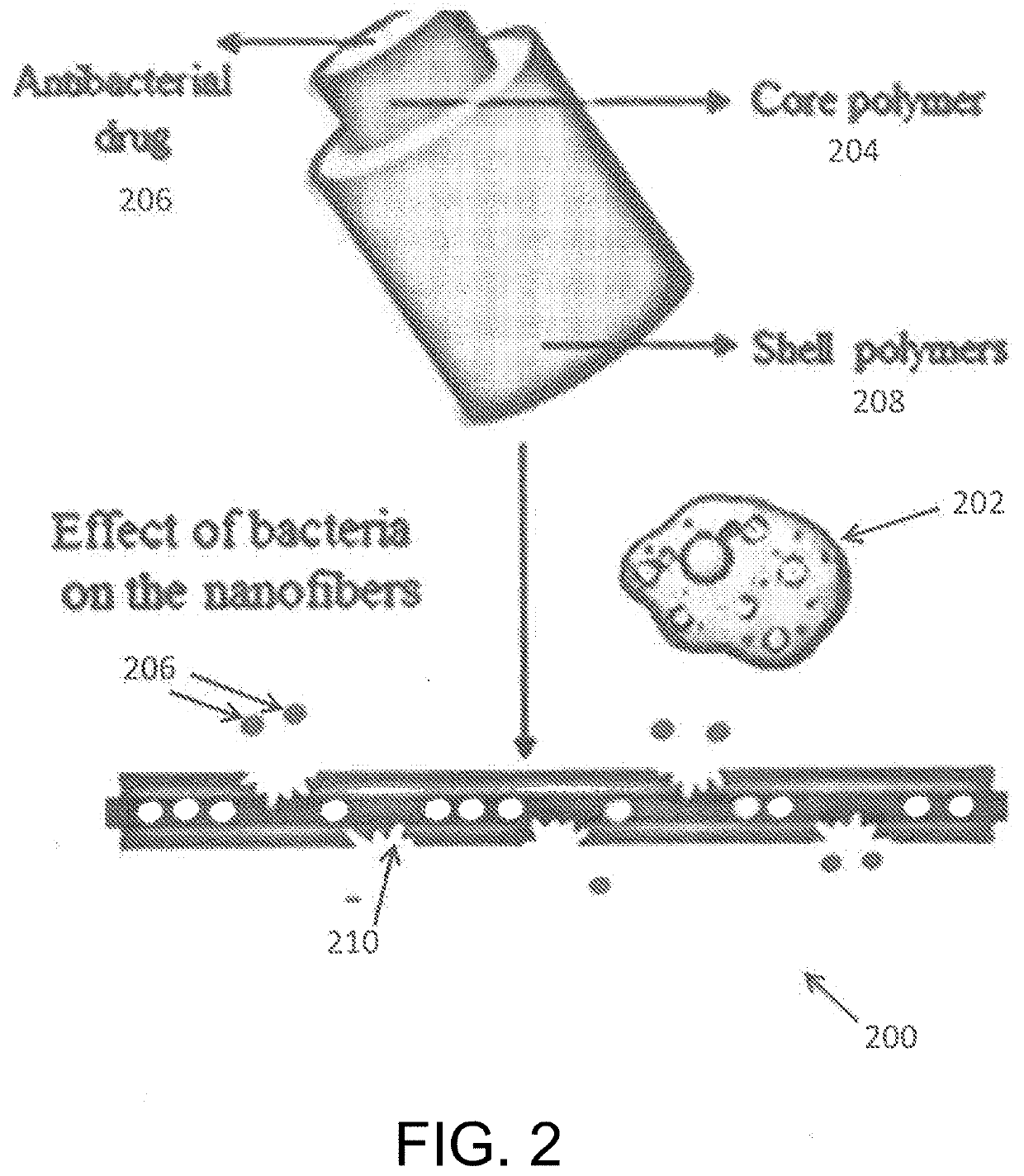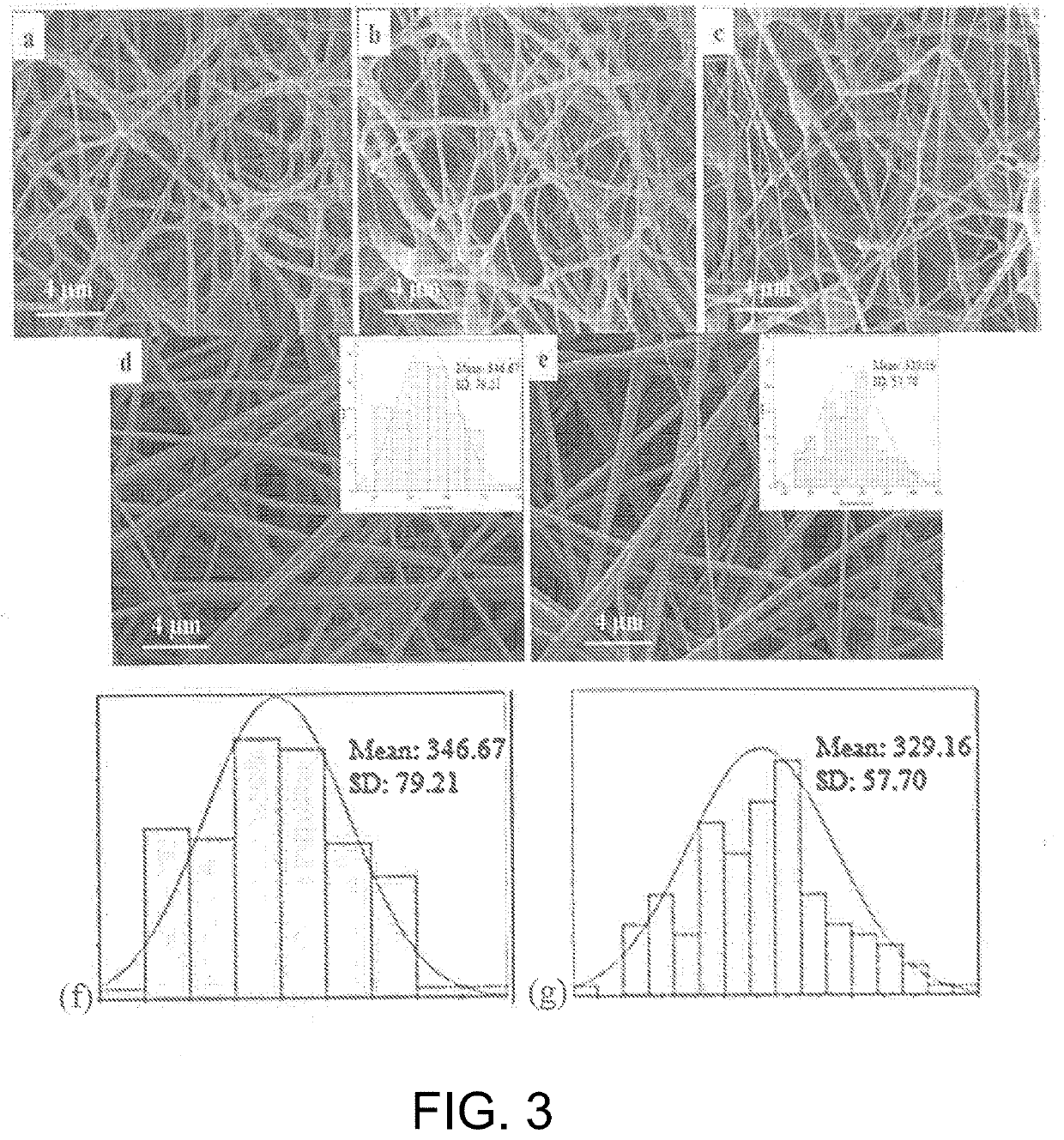Color-changing antibacterial nanofiber
a nanofiber and color-changing technology, applied in the field of antibacterial materials, can solve the problems of unfavorable cytotoxicity of subjects, delayed healing process, and wound infection
- Summary
- Abstract
- Description
- Claims
- Application Information
AI Technical Summary
Benefits of technology
Problems solved by technology
Method used
Image
Examples
Embodiment Construction
)
[0053]Unless defined otherwise, all technical and scientific terms used herein have the same meaning as commonly understood by one of ordinary skill in the art to which the invention belongs. Although any methods and materials similar or equivalent to those described herein can be used in the practice or testing of the present invention, the preferred methods and materials are now described. All publications mentioned hereunder are incorporated herein by reference.
[0054]Generally, the present disclosure provides an antibacterial nanofiber that changes color and releases an antibacterial agent in response to the presence of bacteria.
[0055]Tackling bacterial infection without compromising wound healing can be addressed by using the antibacterial nanofibers described herein. The nanofibers may, for example, be used in preparation of bacteria responsive wound dressings.
[0056]The antibacterial nanofiber comprises a core formed of a biocompatible polymer and an antibacterial agent. The c...
PUM
| Property | Measurement | Unit |
|---|---|---|
| voltage | aaaaa | aaaaa |
| voltage | aaaaa | aaaaa |
| flow rate | aaaaa | aaaaa |
Abstract
Description
Claims
Application Information
 Login to View More
Login to View More - R&D
- Intellectual Property
- Life Sciences
- Materials
- Tech Scout
- Unparalleled Data Quality
- Higher Quality Content
- 60% Fewer Hallucinations
Browse by: Latest US Patents, China's latest patents, Technical Efficacy Thesaurus, Application Domain, Technology Topic, Popular Technical Reports.
© 2025 PatSnap. All rights reserved.Legal|Privacy policy|Modern Slavery Act Transparency Statement|Sitemap|About US| Contact US: help@patsnap.com



